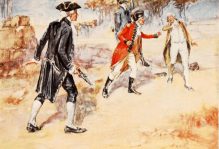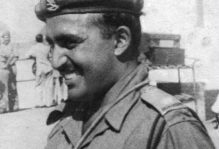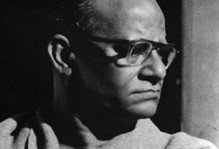Rao Tula Ram: Subhash Chandra Bose from Haryana
Editors Note:There is uncanny similarity between Rao Tula Ram, the hero of Haryana and Subhash Chandra Bose, read on and be amazed
A generation separates Rao Tula Ram and Subhash Chandra Bose; they were products of different times. However what struck us when we were doing research on the freedom movement of India for an article for Probashi was the apparent similarity between the two in their approach towards freeing India from the British rule. Rao Tula Ram preceded Subhash by more than 70 years, both the men were ahead of their times and essentially believed that Biritsh had to be matched bayonet by bayonet if negotiation for independence had to be done on equal terms.
Rao Tularam was one of the important leaders of the 1857 revolt. He was the scion of the respectable Rao family who held the Jagirdari of Rewari. Circumstances so presented themselves that Tularam had to take on the mantle at the young age of 14. He was highly proficient in Persian, Urdu, and Hindi and had fair knowledge of English. In the run-up to the Mutiny of 1957 Tula Ram with an army of 500 soldiers captured the revenue office and other government buildings at Rewari and proclaimed himself as the Raja of parganas comprising of Rewari, Bhora and Shahjahanpur.
The British were nonplussed. Tula Ram then proceeded to provide assistance to Bhadur Shah Zafar so as to prevent the fall of the Mughals to the British. Concurrently he consolidated his position by building an army of 5000 men and setup a foundry for making small arms and ammunition at Rampur fort. He also rejigged the administration and setup a rather efficient revenue collection system. He elicited the support of the nawabs of Jhajjhar, Farrukhnagar and rajas of Ballabgarh and Bhadurgarh. All this was done in a span of few months by Rao Tula Ram.
However Delhi fell to the British on Sept 20, 1957. Rewari now had to be neutralised to protect Delhi with military force if required. Brigadier-General Showers led out a column (from Delhi) of 1,500 men with a light field battery, 18 two-pounder guns and two small mortars, to capture Rewari and liquidate the Rampur fort. Rao Tularam made a strategic retreat, the mud fort of Rampura was militarily difficult to protect. Rao Tularam planned to engage the British on more open grounds.
Tularam rejected the British offer for surrender in exchange of amnesty, despite fully knowing that defeating the British army would not be an easy proposition. This stance echoed the couplet of Bahadur Shah Zafar, the emperor for whom Tularam fought and whom Subhash Chandra Bose quoted in his speech in 1943:
Ghazion mein bu rahegi jab talak Imam ki
Takhtey London tak Chalegi teg Hindustan ki
(As long as faith resides in the
heart of Indian freedom fighters,
the sword of India will continue to
penetrate the heart of London)
Soon Rao Tula Ram returned to Rewari to take on the British at the battlefield. British were expecting this. They sent a column of 1500 men commanded by one of their best military commander Col Gerrad. The armies met at Nasibpur, 2 miles west of Narnaul town where Rao Tularam ambushed the British forces. Col Gerrad’s men retaliated with heavy fire power, putting Rewari forces on the back foot. During the initial charge Col Gerrad was mortally wounded and English camp was in disarray. Rao Tularam seized the advantage. Lead by Samar Khan and Rao Kishan Gopal, Rewari forces went on the offensive. It was a seesaw battle and in the end unfortunately Rao Tularam was defeated, not by the British, but by his own countrymen when reinforcements arrived to help the beleaguered British forces from Jaipur, Alwar, and Nabha and Patiala princely states.
After the battle, Rao Tula Ram moved into Rajasthan and joined Tantya Tope’s forces .However with 1857 revolt faltering all over India, Rao Tularam did something unprecedented. He escaped in the guise of a saint/ hakim to evade the British (something which Subhash would replicate) by ship from Bombay to Iran and requested Shah of Iran for military help to defeat the British. British were not expecting this and demanded Rao Tularam be handed over to them. Shah refused, however the Shah expressed his inability of any military help to Rao Tularam.
Undaunted Tula Ram moved to Afghanistan and sought help from the Amir. Rao Tularam was given a state reception and assured of help by Amir Mohammad Khan. Unfortunately Rao Tulraram died in Kabul at the age of 38. Amir ensured the ashes be sent to Rewari. India would always remain indebted for this to Afghanistan.
In death however the similarities between Rao Tularam and Subhash ends- Subhash’s ashes never reached India and are supposedly kept at RenkÅji Temple in Tokyo, Japan.






A fascinating article that creates a historical continuity by linking two important Indian freedom fighters. I really enjoyed reading this.